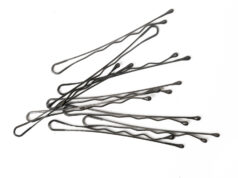Whether you are looking to breathe new life into a family heirloom, refresh a flea market find or flip some vintage furniture for resale, learning how to refinish your own wooden furniture is a valuable and simple skill that is sure to inspire your creativity and save you money too. From old armoires and chests of drawers, to dining room sets, coffee tables and more, by learning a few key skills you’ll be ready to start refinishing your own painted and stained furniture in no time.
What you need:
- Wooden furniture for refinishing, any stained or painted piece will do
- Sandpaper in fine, medium and coarse grits
- A belt or disk sander or sanding block and/or a bottle of paint and varnish stripper
- Medium grit steel wool
- Wood filler
- Sanding sealer
- Paint or stain (oil-based, water-based or gel stain) for your finished piece
- Wood finish, such as polyurethane, lacquer or oil finish
- Rubber gloves and safety glasses
- Clean, lint-free cotton rags
- Two to three paint brushes
- New hardware, including door pulls, hinges, etc. (optional)
How to refinish your wooden furniture
While refinishing furniture may appear daunting at first, it is quite simple and can be completed in a long afternoon or weekend, depending on the size of the piece and the amount of restoration it needs. If you plan to work outside, be sure to check the weather for signs of rain before getting started or set up your workspace in a well-ventilated indoor location.
Step 1: Be sure to clean your furniture piece well before beginning.
Dust, dirt, oil from fingerprints and sticky residue can all spell disaster for refinishing projects, so the first step before you get to work is to ensure that your piece is nice and clean. Using a clean, cotton cloth, dish soap and warm water, thoroughly clean your project piece, paying special attention to tight corners and the areas around drawer pulls and handles where dirt tends to accumulate. Remove any soap residue with a clean cloth and dry your piece with a lint-free microfiber cloth before proceeding.
If your piece has hardware, such as drawer pulls, consider removing them at this time to make the following steps a bit easier.
Step 2: Examine your piece for signs of damage.
Before proceeding, check your piece all over for loose joints, wobbly legs, sticky drawers, cracks, scratches and other surface imperfections. Loose joints and legs can be repaired with screws and wood glue, while sticky drawers will move more smoothly after applying nylon tape or rubbing their edges or drawer runners with paraffin wax.
Surface imperfections, such as cracks, nail holes and scratches, can be filled in with a wood filler, such as epoxy putty or wax filling compound. If using a wood filler, select one that closely matches the color of the wood you’re working with.
Step 3: Remove the old varnish or paint.
Removing the old finish on your piece is the most labor intensive and messy part of refinishing wooden furniture, but it is essential for ensuring proper coverage when re-staining or repainting your piece.
First, you will need to choose which method you want to use: do you want to manually remove the old finish using sandpaper or do you want to remove the old finish with a chemical stripper? Sanding the old finish is a more labor intensive and messy process and doesn’t work as well in tight corners or on turned and rounded legs. Chemical strippers are much quicker and simpler to use, but they require the use of proper ventilation and safety equipment.
Removing the finish by sanding.
If you choose to manually remove the finish with sanding, sandpaper or a sanding block will work but it will take a lot of effort. For larger pieces, consider investing in a disk or belt sander which will make the process go much quicker. If you use a disk or belt sander, make sure you don’t sand too much too soon causing damage to the wood surface.
To begin, start with a coarse grit sandpaper (40- to 50-grit) and sand the surface moving with the direction of the wood grain until most of the finished is removed and the surface is smooth. Next, transition to a medium grit sandpaper (60- to 100-grit) and continue sanding until there is no finish remaining. Finally, using a fine grit sandpaper (120- to 220-grit), smooth out any remaining surface roughness.
Removing the finish with a chemical stripper.
Removing old paint and varnish with a chemical stripper is easier and faster; however, you will want to be sure to work in a well-ventilated area, ideally outside if possible, and wear rubber gloves and safety glasses. Chemical strippers come in several varieties, including liquid, gel and spray, and you’ll want to choose the one that works best for your specific project. Gel strippers are thicker and work well on vertical surfaces, while liquid strippers are more likely to run and are better on horizontal surfaces. Some strippers are more ecofriendly than others and one popular option, available at most home improvement stores, is even suitable for indoor use.
When you’re ready to get started, apply a thick, even coat of your stripper to your piece of furniture using a stiff brush. To avoid allowing your stripper to linger on your piece too long, only work in small sections to ensure you have enough time to finish the areas you’re working on. Following the manufacturer’s instructions, allow your stripper to set on your piece for the recommended amount of time and then test the finish with a putty knife – if the finish comes off easily, it’s ready.
Using your putty knife, remove as much finish as you can; a medium grit steel wool dipped in stripper can help bust through stubborn areas. It sometimes takes more than one application of stripper to get all of the old stain or paint off so be patient; the more existing coats of old finish are on your piece, the longer this process may take. Once you’ve removed as much of the old finish as you can, follow the manufacturer’s instructions to remove any residual stripper from your piece. Depending on the stripper you’re using, you may need to use turpentine or mineral spirits to remove excess stripper.
After removing the stripper, allow your piece to thoroughly dry and then sand any rough spots with sandpaper.
Step 4: Seal your piece with sanding sealer.
Sanding sealers work by helping to ensure even application of your final stain or paint, preventing areas from absorbing too much finish which may result in dark spots.
For this step, apply your sealer using a brush and moving in the direction of the wood grain. Following the manufacturer’s instructions, allow the sealer to soak into the wood for several minutes before wiping off any excess using a clean, lint-free cotton cloth. Next, buff your piece with a fine grit sandpaper and then wipe down your piece with a clean cloth to remove any dust.
Step 5: Apply your new finish.
Now you’re ready to finally finish your piece. Depending on your style, you can choose to paint your piece or stain it, using a number of different stain options. Oil-based stains penetrate wood without raising the wood grain, which can necessitate more sanding; however, these types of stains tend to have stronger odors. While water-based stains do raise the wood grain, meaning you will want to lightly sand your piece after your stain dries to even out any roughness, these stains are more eco-friendly than oil-based stains and are easier to clean up. Finally, gel-stains are thicker, won’t run on vertical surfaces or raise the wood grain and they have excellent penetrating abilities, but they tend to be pricier options and require that the surface be buffed with a cloth between applications.
After you’ve chosen how you want to finish your piece, apply the first coat of your finish using a brush or cotton rag and working with the wood grain. Depending on your preference and what finish you’re adding, you may need to apply multiple coats, allowing your piece to dry fully between applications.
Step 6: Coat your piece in wood finish.
Wood finishes help to protect your piece from scratches, moisture and other hazards and can keep your furniture looking like new longer. While there are many options on the market, some popular wood finishes include lacquer, polyurethane and oil finish.
Apply your wood finish with the grain of your piece using a cotton rag or brush, allow your piece to dry fully and then apply a second coat of finish. After your furniture project has dried, it is finished and ready for use! If you want to replace old hardware, like drawer pulls, now is the time to do it. Enjoy!
Conclusion
Refinishing your own wooden furniture doesn’t need to be an intimidating task. With the right tools and a little bit of knowledge, you’ll be able to refinish painted or stained furniture as a quick weekend project. The process of refinishing furniture can be quite creative and, as you get more confident in the work, you may even find yourself experimenting with different painting styles, contrasting stains, stenciling, faux finishing and more.








